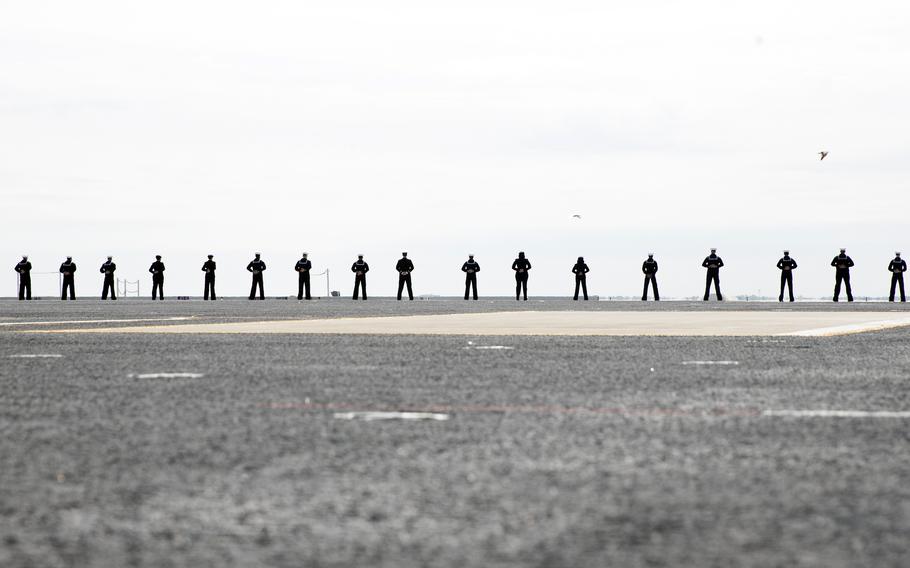
A permanent change of station move can cost thousands of dollars for travel, lodging and vehicle rentals, along with an untold cost in stress. (Gitte Schirrmacher/U.S. Navy)
Starting with the new year, the Navy is requiring senior enlisted sailors and some officers to use a government travel charge card to pay for a permanent change of station.
A PCS can cost thousands of dollars for travel, lodging and vehicle rentals, along with an untold cost in stress. Paying those expenses with a government card is designed to reduce the burden on sailors and improve government accounting, according to a Navy financial specialist.
"It will help sailors to have a better PCS experience, providing a reliable and interest-free means of financial support to all sailors," Yeoman 2nd Class Paulino Gonzales Ramirez of American Forces Network Pacific in Tokyo told Stars and Stripes in an email Thursday. "Especially when it comes to submitting travel claims, which they can use MyPCS Travel Voucher."
Since Jan. 1, enlisted sailors in paygrades E-9 and above and officers O-6 and above have been required to pay their PCS and other travel claims using a government travel charge card, or GTCC, and submit travel claim vouchers via MyPCS, according to a Navy administrative message. Sailors in all paygrades will be subject to the same requirement staring July 1.
Gonzales Ramirez said a government travel card provides sailors with an easier, burden-free financial alternative to paying out-of-pocket expenses associated with PCS travel.
MyPCS also allows sailors to submit their travel vouchers in a fully automated format on personal and government mobile devices, tablets, laptops and desktop computers.
This new requirement will make the administrative workload easier when sailors arrive at their next command, Gonzales Ramirez said. But that depends on how the sailor prepares for the PCS move.
"The more that the sailor prepares and plans out their move and keeps up with receipts and travel vouchers, the faster the process of reimbursement will be," he said. "That is why sailors need to understand how they can use their GTCC.”
Also, submitting a MyPCS travel voucher ensures that sailors have everything they need to fill out and submit their travel claims, he said.
Service members are expected to understand the rules for using a government travel card and submitting a travel voucher, which the government relies upon to pay the travel claims. For example, a sailor making a PCS may be authorized a rental car on one trip but not on the next trip.
"At the end of the day, the responsibility is on the sailor to pay off any balance on their GTCC account," Gonzales Ramirez said. Failure to ensure the balance is paid within 60 days of the end of a PCS or Mission Critical status may result in a delinquency, he said, “and may adversely impact the sailors’ assignability, security clearance and credit history.”